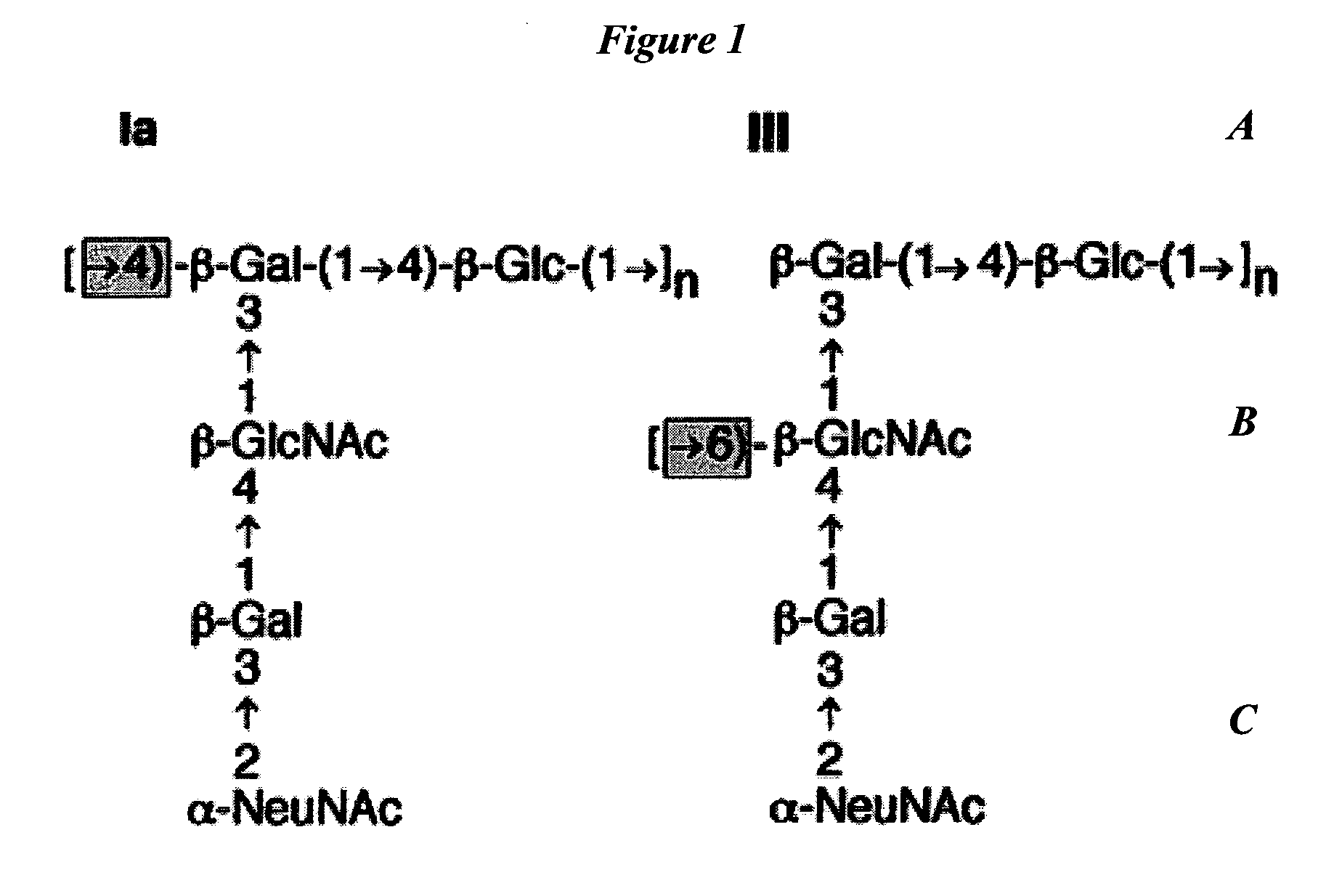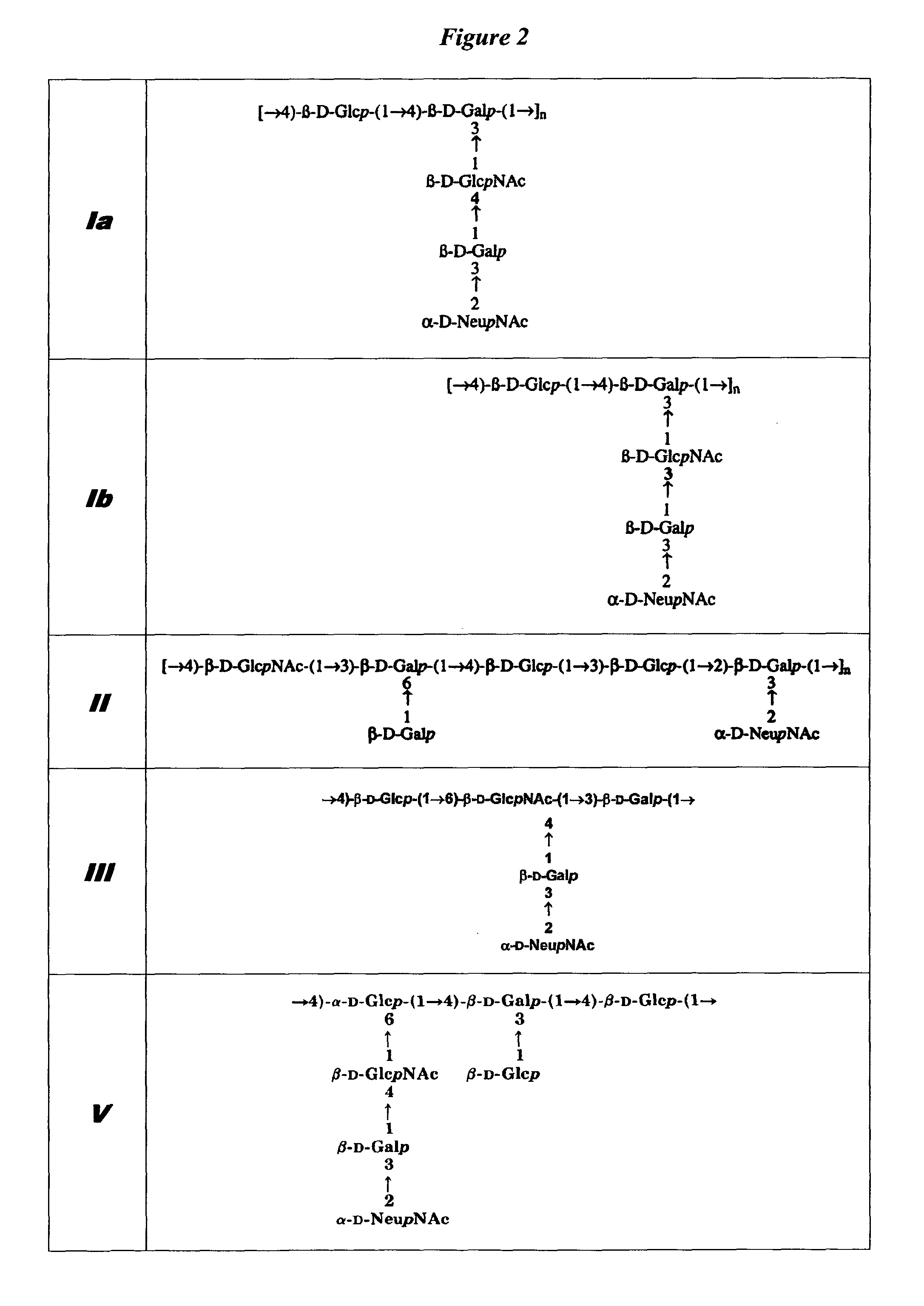Separation of conjugated and unconjugated components
a technology of conjugated and unconjugated components, applied in the field of quality control of vaccines, can solve the problems of limited application, and achieve the effect of rapid and quantitative separation of these components
- Summary
- Abstract
- Description
- Claims
- Application Information
AI Technical Summary
Benefits of technology
Problems solved by technology
Method used
Image
Examples
Embodiment Construction
Quantification of Low Level Unconjugated Saccharide in TT, CRM197 GBS67 or GBS80 Conjugate Vaccine Following Separation by Selective Precipitation
[0154]The invention is exemplified by the analysis of the unconjugated saccharide content of GBS conjugate vaccines of TT (tetanus toxoid), CRM197 (diphtheria toxin derivative), GBS67 or GBS80. The conjugate vaccines were buffered in 10 mM sodium phosphate solution at pH 7.2.
1. Separation of Conjugates by Salt Precipitation
[0155]In order to precipitate the conjugates, 500 μL K2HPO4 saturated solution (150 g per 100 mL of cold H2O (˜8.6 M; pH 10.30)) was added to 500 μL of bulk conjugate (saccharide content ˜1 mg / mL; protein content ˜0.8 mg / mL) resulting in a mixture having a pH of 9.66. The mixture was incubated in 0° C. ice bath for 10 min.
[0156]The mixture was centrifugated in a Beckman Microfuge 11 at 13000 rpm for 20 min and the pellet adsorbed to the wall of the vial. The supernatant was removed and then analysed to estimate the sacch...
PUM
| Property | Measurement | Unit |
|---|---|---|
| pH | aaaaa | aaaaa |
| pH | aaaaa | aaaaa |
| pH | aaaaa | aaaaa |
Abstract
Description
Claims
Application Information
 Login to View More
Login to View More - R&D Engineer
- R&D Manager
- IP Professional
- Industry Leading Data Capabilities
- Powerful AI technology
- Patent DNA Extraction
Browse by: Latest US Patents, China's latest patents, Technical Efficacy Thesaurus, Application Domain, Technology Topic, Popular Technical Reports.
© 2024 PatSnap. All rights reserved.Legal|Privacy policy|Modern Slavery Act Transparency Statement|Sitemap|About US| Contact US: help@patsnap.com










